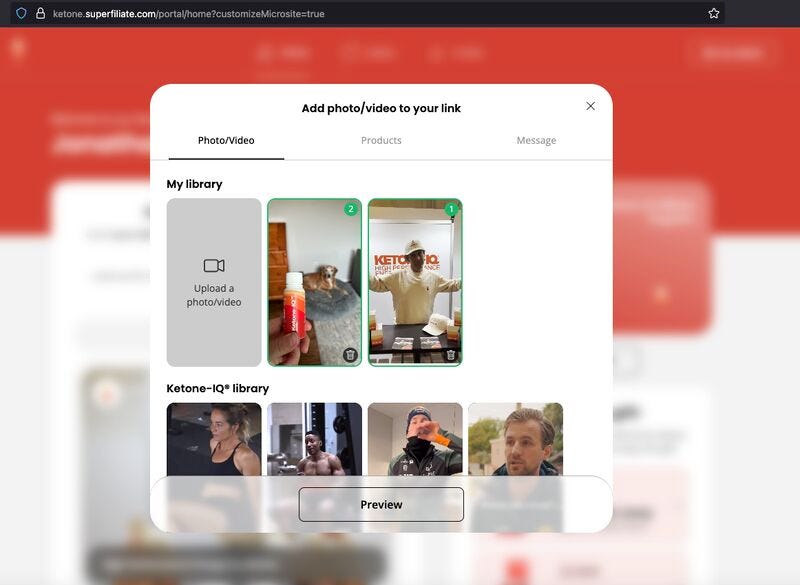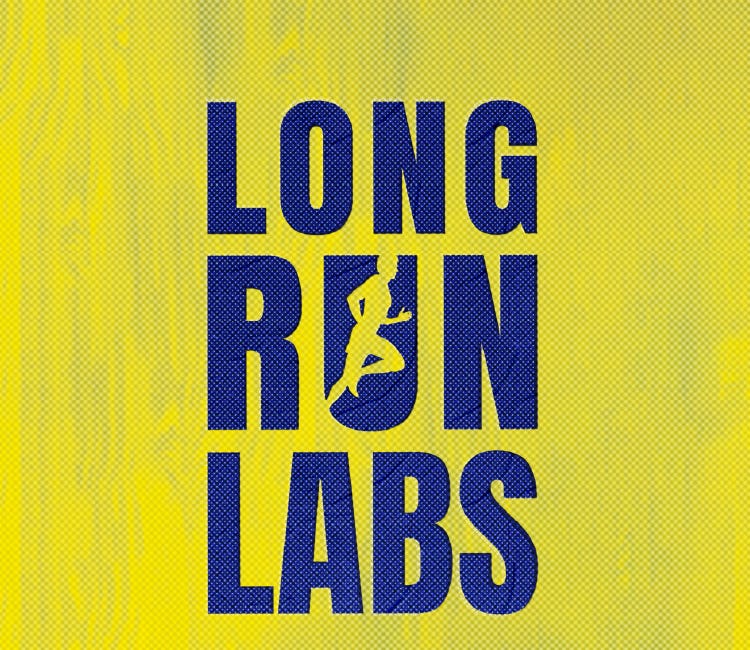Why Most Affiliate Programs Stall (and 8 Ways to Make Yours Thrive)
After working with dozens of brands, I’ve learned what turns affiliate and sponsor deals into lasting, revenue-driving partnerships that are a win-win-win.
Whether you’re a brand trying to lower CAC or a creator building sustainable income, the right affiliate or referral program can be a growth engine.
The wrong one? A time and money drain.
TL;DR (but please do): How to Make Affiliate, Referral & Creator Partnerships Work
Pick your lane: Focus on 1–2 funnel stages, not all three.
Make it easy: Give partners working links, tested codes, and launch info in advance.
Onboard well: Provide a quick-start guide, brand guidelines, and ready-to-use assets.
Reward growth: Use tiered commissions, bonuses, and early access perks.
Track beyond codes: Use surveys, social listening, and branded search trends.
Build community: Keep partners engaged with recognition, group spaces, and events.
Do this, and your program will drive results for both sides—long after the initial contract ends.
How to Build Affiliate & Creator Partnerships That Actually Work
Affiliate, creator, and influencer marketing isn’t a fad. It’s not a “nice-to-have.” It’s a core channel that when done right can drive meaningful revenue for brands while helping creators build sustainable businesses.
Over the last few years, I’ve worked with dozens of brands across the endurance, wellness, and outdoor spaces. Some partnerships have been forgettable. Others have been wildly successful, creating multi-year relationships that deliver consistent results for both sides.
Here’s what I’ve learned about what makes the difference and a few often-overlooked pieces that can take your program from functional to thriving.
1. Define Success—Together
Before a campaign starts, everyone should be crystal clear on what “success” means.
Is the goal awareness and consideration? Or consideration and conversion?
(Hint: you shouldn’t try to cover all three stages of the funnel in one partnership)
When you know which part of the funnel you’re focused on, you can design the right assets, track the right metrics, and set the right expectations.
And for creators - make sure you know WHY the brand is partnering with you (and vice versa for brands). I asked PUMA why we were re-signing for a third year in a row, and it came down to trust, and building credibility in a new space. With that knowledge, I am able to lean into the part that the brand values most.
2. Give Partners the Tools to Win
Your partners should never be guessing whether their link works, if their discount code is valid, or what products are launching soon.
Make it easy:
Avoid channel conflicts with discount amounts
Provide functional, tested codes, landing pages, and links. Vanity codes are best when possible*
If you’re focused on consideration, create landing pages where visitors can submit their email (not just purchase) so you’re not measuring success solely on coupon redemptions
Share launch info in advance so partners can actually plan
*Random character strings are hard to remember. I do my best to make all For The Long Run related codes “FTLR,” as I get dozens of DMs on a weekly basis asking for coupon codes for products I’ve shared about, and it’s much easier to just remember a single code than refer back to a roster of codes.
3. Onboard Like You Mean It
A strong start sets the tone for the whole relationship. Consider providing:
A short welcome guide or quick-start video
Brand guidelines (tone, visuals, do’s & don’ts)
Pre-written copy snippets they can adapt to their own voice
When creators feel confident and supported from day one, they’ll hit the ground running and start producing results faster.
4. Build a Feedback Loop
Creators want to know the impact they’re having—in real time. That feedback enables them to adjust, double down on what’s working, and keep momentum.
I’ve had a relationship with Skratch Labs use code FTLRPOD for 20% off your first order ;) for over three years because of their simple, effective affiliate model. It’s put thousands of dollars in my pocket and tens of thousands into theirs—without any flat-fee sponsorships in over a year. I’m still motivated to promote them because it works, both for me and for them. Oh and the product is fantastic, and the team is even better.
Another great example: Ketone-IQ, who uses Superfiliate*. They’ve eliminated the need for clunky custom UTM links—I have a simple vanity URL (ketone.com/FTLR)—and I get a notification for every conversion. Talk about closing the loop! I know immediately if something I’ve shared has resonated.
Plus, because my social accounts are connected, they can see the aggregate impact of every post where they’re tagged. I can even upload UGC-style content for them to use.
Dylan Bowman on his CTA for brands… all about communication!
5. Don’t Forget Your Customers
Your best affiliates might already be your customers.
Look at your purchase history:
Who’s buying the most?
Who’s been with you since the early days?
Who’s made a purchase in the last 90 days?
Bonus: who checks TWO of those boxes?
These people are often happy to share your product simply because they love it—not because they’re getting a big check. Invite them to join your ambassador or affiliate programs. Give them a little acknowledgment. Help them help you.
6. Reward Growth
Flat commissions are fine, but tiered or performance-based rewards can light a fire:
Higher commission rates after hitting certain thresholds
Bonuses for monthly or quarterly sales milestones
Early access to new products or event invites as non-monetary perks
The more reasons a creator has to keep pushing, the longer they’ll stay engaged.
I partnered with a solar company that I used to go solar in 2022, and we drove $350,000 in referrals. When I went to add a battery to my system in 2024, it was basically free. They gave me a huge discount as a result of our work together.
Tifosi, a sunglasses brand I’ve been partnered with for a couple years now is letting me offer a special discount for my 35th birthday (Aug 15). This idea came about during our quarterly brand partnership meeting. If you’re in the market for sunglasses, make sure you’re following along on IG!
7. Track More Than Codes
Attribution isn’t always straightforward—creators often drive influence that’s not captured by coupon codes. Expand your view:
Add a “How did you hear about us?” question at checkout*
Use social listening to see who’s talking about your brand
Watch for spikes in branded search or web traffic after big creator pushes
You’ll get a clearer picture of true impact, which also makes creators feel valued.
*This also enables you to measure a new channel focus, like podcasting for example. Oh, podcasting you say? Want to reach lots of podcast listeners in a scalable way? Check out the Long Run Labs Collective and connect with 15 podcasts reaching >250K/month with a single point of contact (me)! More below…
Janji, a Boston-based apparel company with a recent(ish) focus on trail added this in a post-purchase survey and it provides them with the business intelligence they need to understand that podcasting is an effective channel for them even if coupon code metrics suggest otherwise (as they don’t capture all of the impact).
🎙️ Introducing the Long Run Labs Podcast Collective 🎙️
For years, I’ve had a front-row seat to the incredible power of storytelling in the running world. Whether it was through my own show, For The Long Run, or the countless hours spent listening to fellow athletes and hosts share their journeys, one thing has remained crystal clear: this sport is built on community, authenticity, and great storytelling.
8. Build a Community
The best programs make creators feel part of something bigger:
Host a private Slack/Discord where affiliates can share wins & strategies
Spotlight top performers on social or in newsletters
Hold quarterly “creator summits” to connect and brainstorm
When affiliates feel connected (to you and to each other) they stick around longer. Community is the strongest moat; often stronger than simply having a good product (a common trap!).
Back to Skratch Labs - they often invite me to dinners at races where they have a presence, and have a really strong focus on hospitality and community, which starts from the top/their founder, Dr. Allen Lim. Allen is a chef and loves to bring people together to break bread.
The Takeaway
The best affiliate and creator partnerships are built on clear goals, the right tools, great onboarding, real-time feedback, rewarding performance, broader attribution, community, and tapping into your existing customer base.
Get those right, and you’ll create partnerships that deliver results for both sides—long after the first post goes live.
Brands: What’s working (or not) in your ambassador programs?
Creators: What did I miss?
Note: Superfiliate is a sponsor of Long Run Labs and is offering the first month free for anyone who signs up for their affiliate/creator/influencer management platform and mentions this partnership. I partnered with Superfiliate because of the dozen+ affiliate platforms i’ve used, theirs is hands down the best and simplest… and makes me want to act. Hopefully these insights are useful beyond that fun fact.
If you know a brand or creator who could use this playbook, forward it to them — they’ll thank you (and so will I).


